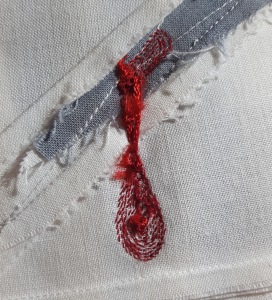ALL OUR PEOPLE is a textile and photography exhibit exploring memory, community, and movements. The show will feature queered stitches by amy dame and images by Ahalya Raman. Several workshops will be offered throughout the exhibit, more information TBA.
This exhibit is produced with the support of Easthampton City Arts.
WHEN: November 9th – December 7th
OPENING RECEPTION: November 9th, 5-8pm
WHERE: MAP Space Gallery, Eastworks
116 Pleasant St
Eastworks, MA
GALLERY HOURS: Mon, Weds & Sat // 12-5pm
***************************************
All Our People as described by fellow artist Suz Evans-
I am here to tell you that the photograph and quilt have a lot in common. Some of this material is straightforward, but other parts are twisting. If you aren’t twisting then maybe you should try a twist. Dame’s quilts follow some tradition in form and function. As a tool of communication, a traditional storytelling of the lives abstracted in Raman’s photographs. They are both using their hands to tell from history and present day. They’ve chosen from fragments of leftovers and visits with lovers. A smart device can snap one in a fragment of a second. Eventually the whole is stitched together. It takes hours. It takes days! It takes months. It can take years!
This is life and it’s gay and multidimensional. I should clarify that I am using the word gay interchangeably with queer, and I’m using the world queer interchangeable with power. Forgive me but gayness has a ring to it. It feels like history and that makes it feel precious to me. The hankie quilt is exactly the texture of gayness. Just then amy dame reminds us there is more to unpack. But why put a box over the face? This feels more like queerness. We have overturned the bright symbolic colors in exchange for our ethereal glances; habitually opening apps, the palm upturned.
***************************************
Accessibility –
The MAP Gallery is on the main floor of the Eastworks building. The doors into the building are on the same level as the parking lot but do not have push button entry. The restrooms are ADA compliant but gendered. We kindly ask attendees to refrain from wearing scented products so that the space can be more accessible to those with chemical sensitivities, including one of the artists. There is limited seating in the gallery space, what is available will be standard folding chairs.
***************************************
This exhibition and gathering will take place on the traditional territories of the Nipmuck and Pocumtuc peoples. For those of us who are non-Indigenous, with the exception of those who were enslaved, our presence on these lands is an ongoing act of colonization that must be acknowledged. Colonization is complicated. We are grateful to the people on whose land we live and make art.












